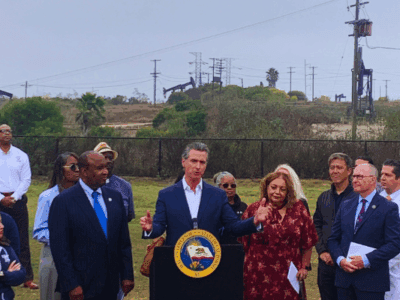Achieving EV Battery Sustainability
CLEE issue brief looks back on 2022 EV battery supply chain milestones and forecasts 2023 decisions
Countries in key markets are accelerating their transportation decarbonization goals, which in turn is driving up demand for electric vehicles (EVs). Here in California, for example, the Air Resources Board approved the Advanced Clean Cars II rule in 2022, which establishes that all new passenger vehicles sold in the state must be zero-emission vehicles by 2035. California is not alone in its ambitions for an electrified future, and that future is not just for cars—other transportation methods, from buses and vans to micro-mobility devices, are electrifying rapidly. More EVs on the road means more EV batteries, and more EV batteries means that we need more minerals to create those batteries. Achieving a sustainable EV battery supply chain is crucial as demand increases.
In response to increasing global demand for EV batteries, industry is dramatically increasing the supply of minerals like lithium, cobalt, lead, nickel, and copper, among others. Some demand is met—and will continue to be met—through mining of new materials, while a portion of demand is met through reusing and recycling recovered materials. Mining raises especially serious concerns regarding the environmental and societal impacts for local communities. The entire EV battery supply chain—from material extraction to processing and manufacturing—must strive for strong environmental protection and human rights safeguards, along with appropriate governance mechanisms for monitoring and enforcement.
To advance global conversation about these challenges, UC Berkeley’s Center for Law, Energy & the Environment (CLEE), along with ClimateWorks, has conducted outreach over the past year to a variety of organizations active in EV battery supply chain sustainability efforts, including human rights and transportation electrification advocates. CLEE recently released a policy brief summarizing pivotal developments from 2022 and previewing future actions that can advance a just and sustainable battery supply chain.
Key developments and themes in 2022
- Calls for mining law reform: Many existing mining laws are inadequate to meet the challenges of 21st century mining and fail to recognize human rights and environmental impacts. For example, the U.S. Mining Law of 1872 is over 150 years old and remains the primary U.S. federal law governing prospecting and mining. In 2022, advocates supported the Clean Energy Minerals Reform Act to advance mining reforms. Although the Act ultimately did not succeed in Congress, it elevated long overdue conversations about the impacts of existing mining law and opportunities for improvement.
- Changing economic conditions: The war in Ukraine, ongoing COVID-19 pandemic impacts, and supply chain constraints led to high costs and material shortages in 2022. The war in Ukraine drove up nickel prices and raised costs for EV battery manufacturers, and some advocates noted that the war negatively impacted efforts to secure better nickel practices.
- New policy in the U.S. and E.U. with global ramifications: The Inflation Reduction Act in the United States and new EV battery regulation in Europe both made EV battery headlines in 2022. Both laws take bold measures to boost domestic production and manufacturing, and both present ambitious approaches for circular economy and sustainability practices. For example, the Inflation Reduction Act introduces domestic content requirements for EV batteries, and the E.U. battery law establishes varying rates of material recovery for cobalt, lead, nickel, copper, and lithium, and increases the stringency of the requirement over time. While these laws represent significant advancements in sustainable EV battery policy approaches, they also raise concerns about potential global supply chain disruptions, unintended negative environmental and social outcomes, and limited opportunities for countries that do not meet the conditions for participating in trade.
Looking ahead to the remainder of 2023, you can expect to hear more about the impacts of these new laws and ongoing discussions about mining reform, economic conditions, and a variety of other crucial topics that will continue to shape the development of a sustainable EV battery supply chain.
You can view CLEE’s new brief and our previous publications on this topic here. Check out previous posts on this topic here.







Reader Comments